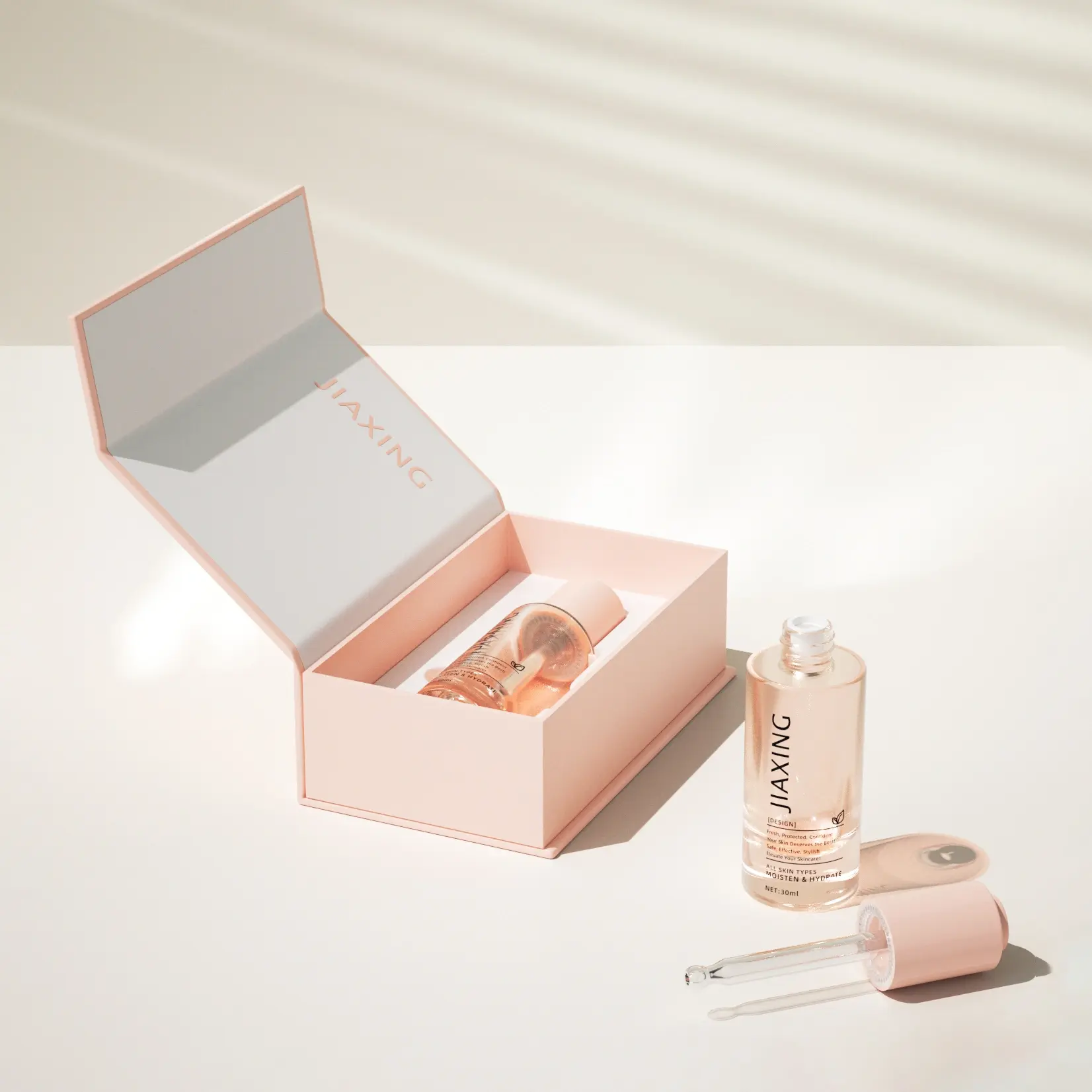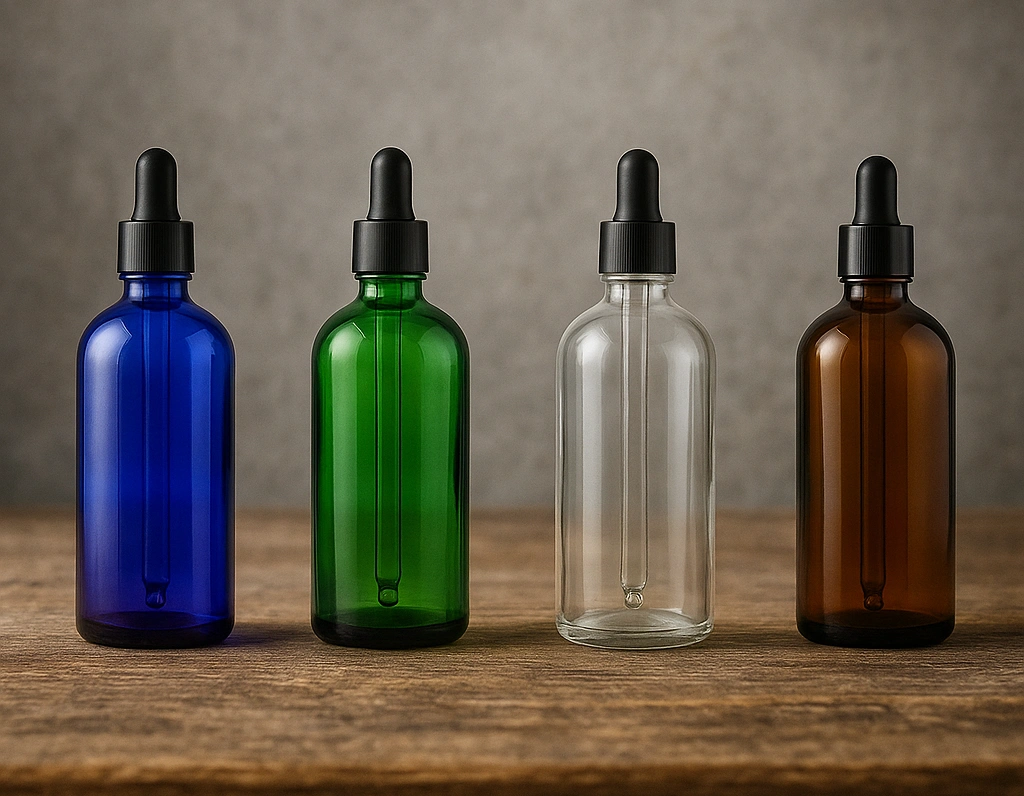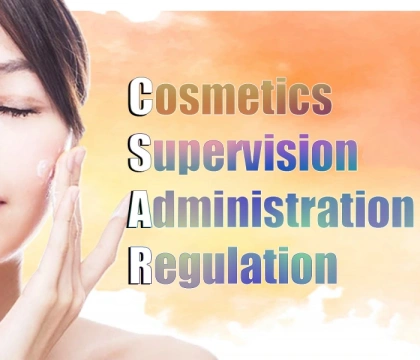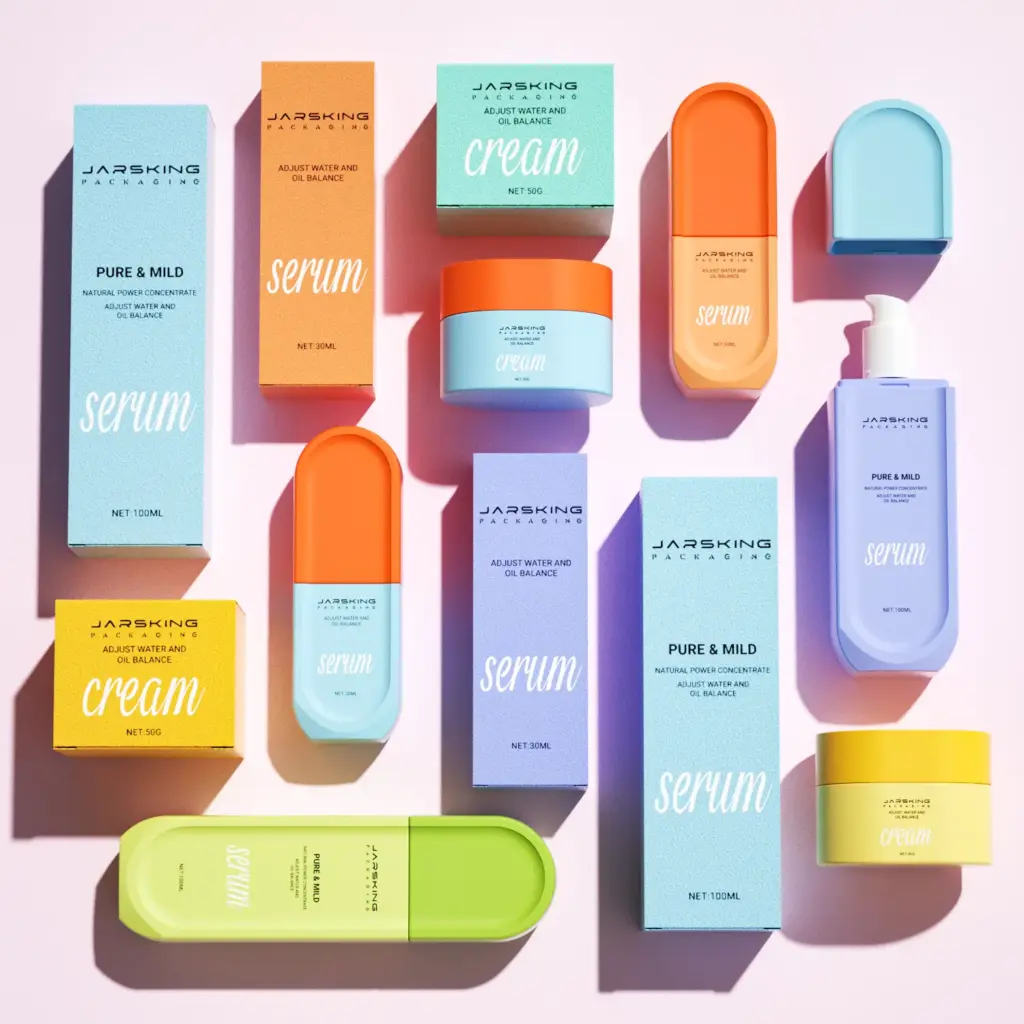Have you ever unboxed a luxurious face cream or admired the sleek lines of a new lipstick and wondered about the journey it took to get to your hands? Cosmetic packaging is the unsung hero of the beauty world. It’s not just about looking good—it’s about protecting your favorite products, telling a brand’s story, and, increasingly, doing right by the planet. In today’s crowded beauty market, packaging is more than a shell; it’s a powerful tool for connection, trust, and sustainability.
Whether you’re a beauty entrepreneur, a packaging designer, or a skincare enthusiast, understanding the three levels of cosmetic packaging—primary, secondary, and tertiary—is essential. These layers work together to keep products safe, make them irresistible on the shelf, and ensure they arrive intact, all while supporting your brand’s sustainability goals.
Let’s take a friendly, in-depth journey through each level of cosmetic packaging, exploring the latest trends, materials, regulations, and strategies that can help your beauty brand shine in 2025 and beyond.
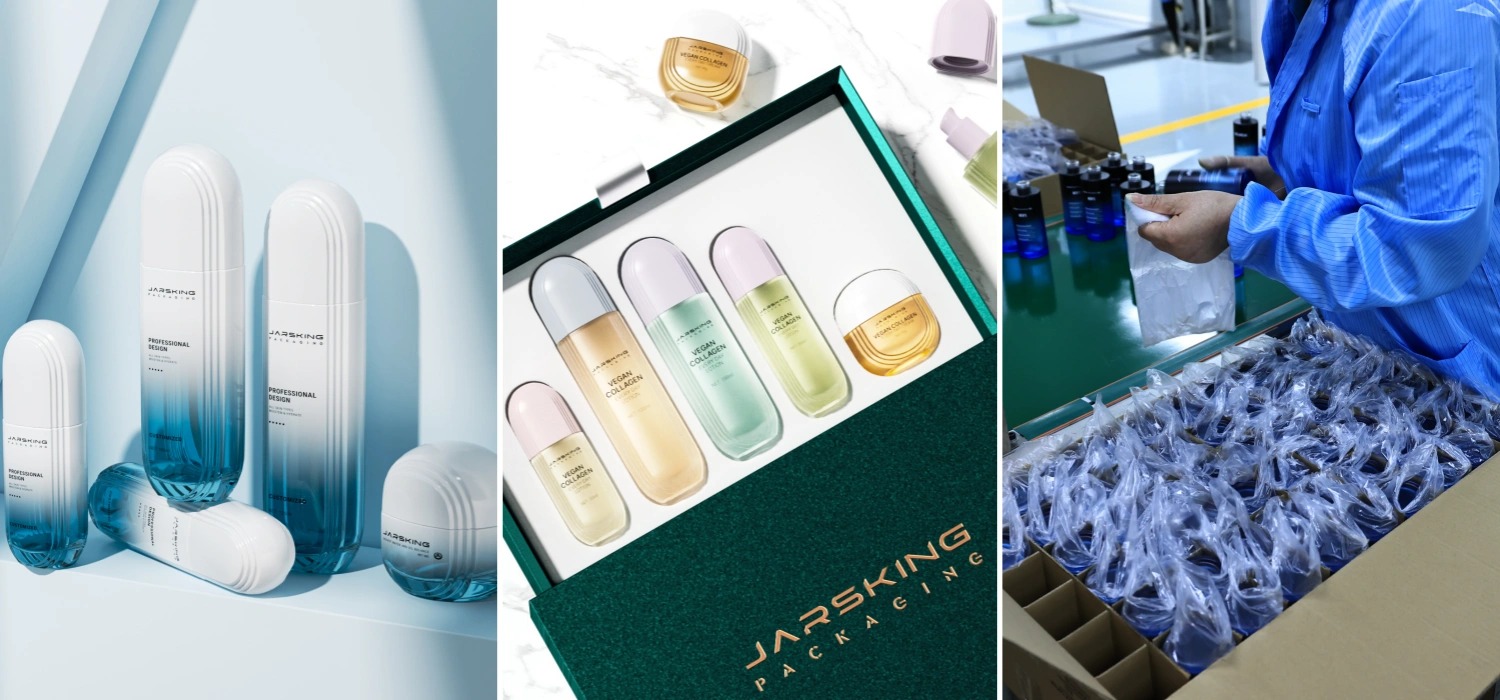
Why Cosmetic Packaging Matters More Than Ever
The Heart of the Beauty Experience
When it comes to beauty packaging, first impressions are everything. The right packaging design can turn a casual browser into a loyal customer. It’s the first handshake, the first “wow,” and the first promise of quality. But today’s consumers want more—they want packaging that’s beautiful, functional, and eco-friendly.
The Rise of Sustainable and Eco-Friendly Packaging
As sustainability becomes a top priority for shoppers and brands alike, eco-friendly packaging is no longer optional. Beauty brands are racing to adopt recyclable, refillable, and biodegradable options. In fact, a recent study found that over 60% of beauty consumers are willing to pay more for products with sustainable packaging. If you want to win hearts (and Google searches), your packaging needs to be as green as it is gorgeous.
The Three Levels: A Quick Overview
Primary Packaging: The container that holds the product itself—think bottles, jars, tubes, and compacts.
Secondary Packaging: The outer box or sleeve that houses the primary container, offering extra protection and a canvas for your brand story.
Tertiary Packaging: The robust shipping cartons and pallets that move beauty products safely from factory to store or customer.
Each layer has its own job, but together, they create a seamless, safe, and delightful experience for your customers.
Primary Packaging: Where Beauty Meets Function
What Is Primary Packaging?
Primary packaging is the first layer of cosmetic packaging your customer interacts with—it’s the glass bottle that holds your serum, the airless pump that dispenses your moisturizer, or the compact that protects your powder. This essential packaging layer is designed not only to safeguard the product inside, but also to deliver a delightful, sensory experience every time it’s used. In the world of beauty packaging, primary packaging is where function meets aesthetics, setting the stage for your brand’s story and the consumer’s daily ritual.
Why Primary Packaging Is Essential
- Product Protection: The main job of primary packaging is to shield your formulas from air, light, and contaminants. For skincare and makeup products, this means preserving the efficacy and freshness of active ingredients—especially important for sensitive formulas like serums, vitamin C treatments, and botanical-infused creams.
- User Experience: Great primary packaging makes application a pleasure. Pumps, droppers, ergonomic tubes, and airless dispensers are designed for ease of use, precision, and minimal waste.
- Brand Identity: The look and feel of your primary packaging—its colors, finishes, and textures—communicate your brand’s values. Whether it’s the cool minimalism of a clear glass bottle or the tactile luxury of a soft-touch compact, these choices set the tone for your product line.
- Regulatory Compliance: Primary packaging must display essential information: ingredient lists, batch codes, expiration dates, and safety warnings. This transparency builds trust and meets global cosmetic regulations.
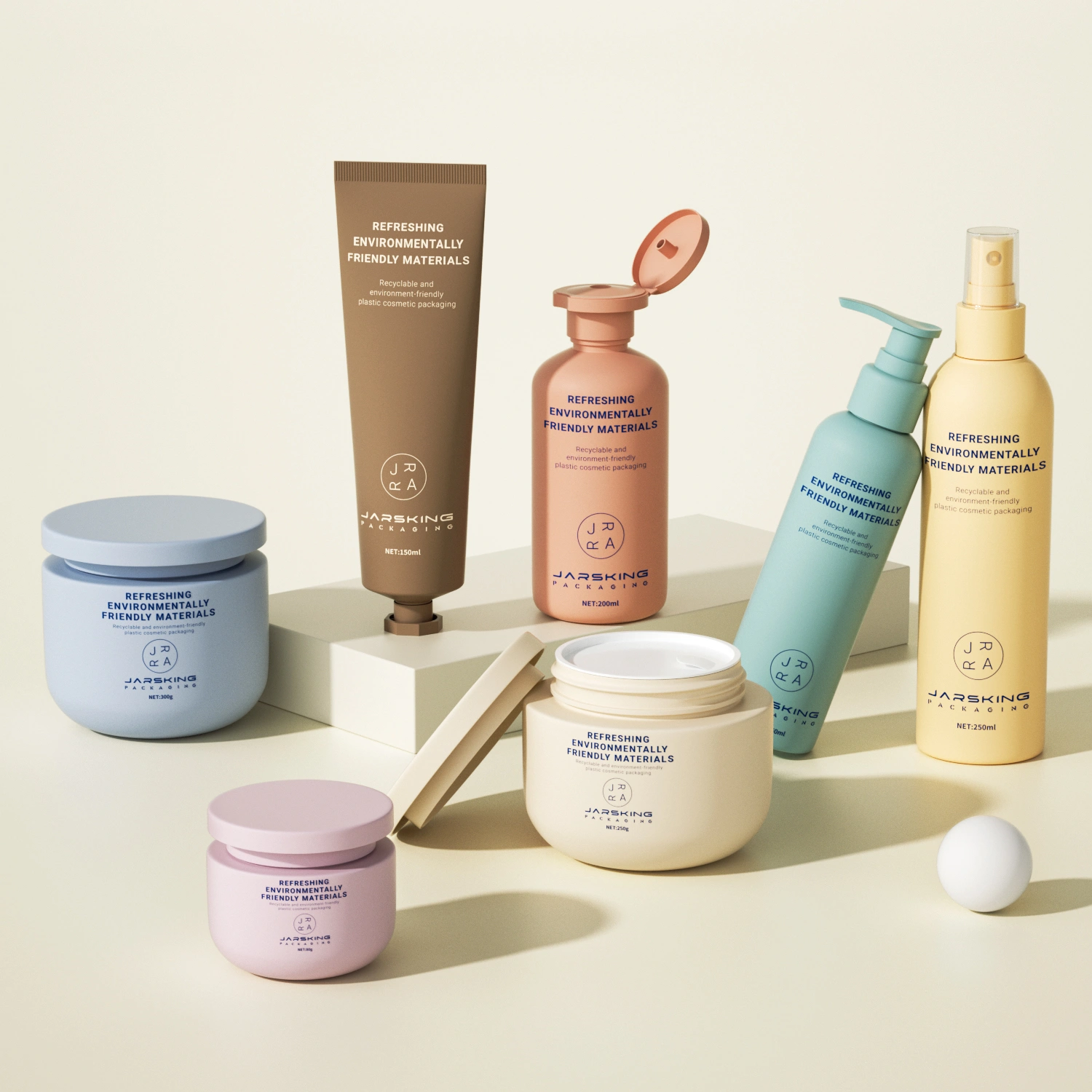
Popular Types of Primary Packaging
- Glass Bottles: Highly favored for serums and facial oils, glass is elegant, non-reactive, and recyclable. Green glass is often chosen for skincare to protect light-sensitive ingredients, while clear glass is perfect for showcasing botanical infusions or visually striking formulas.
- Plastic Tubes: Lightweight and versatile, plastic tubes are ideal for creams, cleansers, and sunscreens. Materials like polypropylene (PP), PET, and HDPE are common for their durability and compatibility with various formulas.
- Jars: Used for balms, masks, and rich creams, jars can be made from glass, plastic, or even bamboo for a sustainable touch.
- Compacts: Essential for pressed powders, blushes, and cushion foundations, compacts often feature mirrors and magnetic closures for convenience and style.
- Droppers & Ampoules: Perfect for precise application of active skincare ingredients, droppers offer control and hygiene.
- Sticks: Used for lip balms, solid perfumes, and deodorants, stick packaging is portable and user-friendly.
Trending Materials in 2025
- PCR Plastics: Post-consumer recycled plastics are now a must-have for eco-conscious beauty brands, helping to close the recycling loop and reduce environmental impact.
- Aluminum: Lightweight, endlessly recyclable, and increasingly popular in sustainable packaging, aluminum is used for tubes, bottles, and even compacts.
- Bioplastics & Bamboo: Plant-based, biodegradable materials are ideal for brands prioritizing green beauty and sustainable packaging.
- Glass: Still the gold standard for luxury skincare packaging, glass offers both recyclability and a premium feel.
Design and Sensory Appeal
- Minimalist Packaging: Clean lines, simple shapes, and fewer materials appeal to modern, eco-aware consumers and reinforce a luxury aesthetic.
- Transparent Elements: Showcasing the product inside—especially botanicals or unique textures—builds authenticity and trust.
- Tactile Features: Soft-touch finishes, embossed logos, and satisfying closure sounds (like a magnetic snap) create memorable, multi-sensory experiences.
- Color Psychology: Pastels evoke calm, metallics suggest luxury, and bold hues radiate energy—color choices have a powerful impact on perception and shelf appeal.
Smart and Connected Packaging
- QR Codes: Offer customers instant access to product information, tutorials, and authenticity checks—bridging the gap between physical and digital experiences.
- NFC Tags: Enable interactive experiences, traceability, and even personalized content.
- Augmented Reality (AR): Let customers try on makeup virtually or unlock exclusive content, making the packaging part of a dynamic brand journey.
Refillable and Reusable Packaging
- Refillable Jars and Bottles: Reduce waste and encourage repeat purchases, a growing trend among sustainable and luxury brands.
- Modular Designs: Allow consumers to mix and match components, personalizing their beauty routine and extending the life of the packaging.
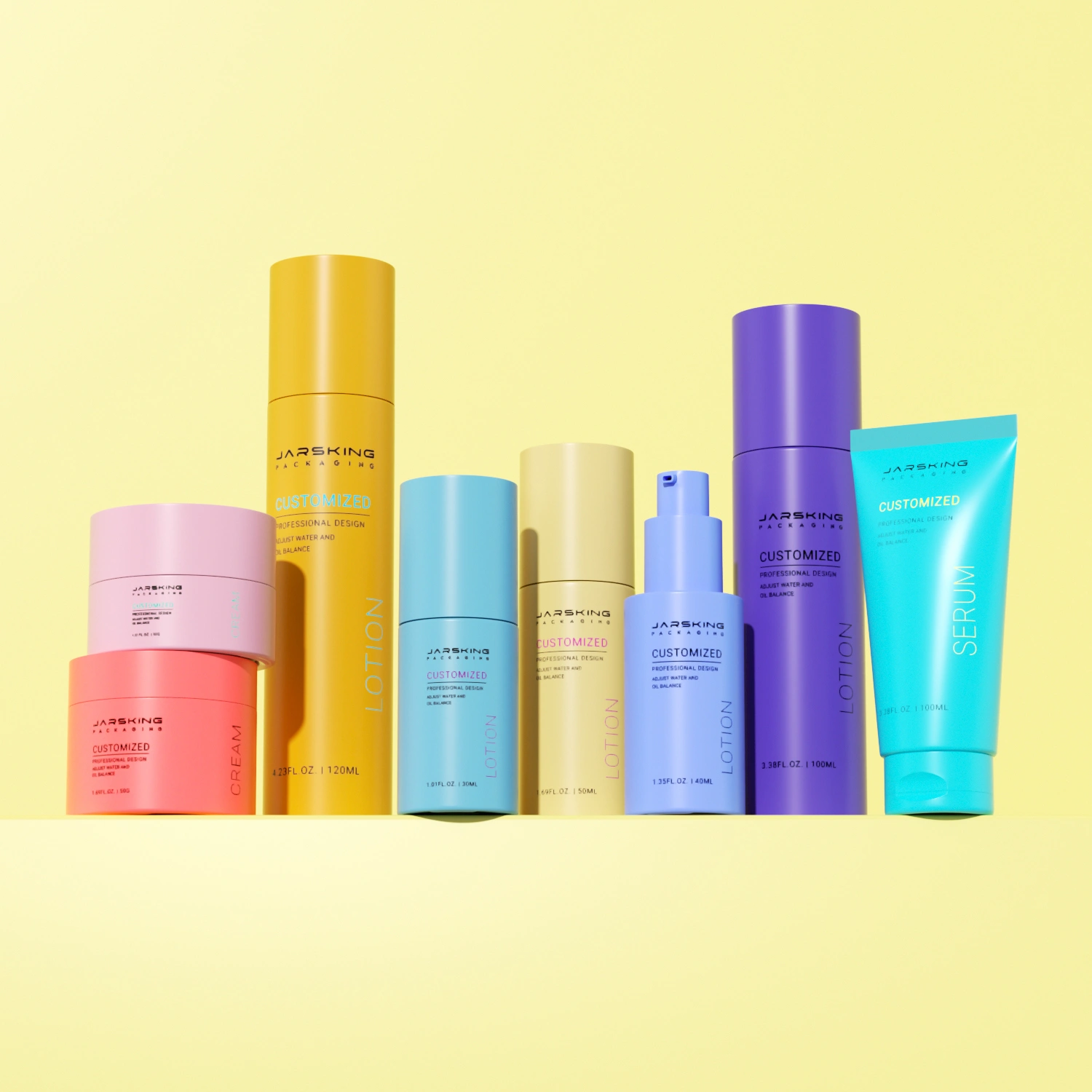
Secondary Packaging: The Brand’s Storyteller
What Is Secondary Packaging?
Secondary packaging is the outer layer that wraps around your beauty product’s primary container—think of the elegant box for a perfume bottle, the branded sleeve for a lipstick, or the carton that holds a set of skincare ampoules. In the world of cosmetic packaging, secondary packaging is the first thing shoppers see on the shelf or in an unboxing video, making it a crucial touchpoint for both protection and brand storytelling.
Why Secondary Packaging Matters
- Extra Protection: Secondary packaging acts as a protective shield, guarding the primary packaging (and the product inside) from bumps, scratches, and other hazards during shipping, handling, and storage. This extra layer helps ensure your beauty products arrive in perfect condition, whether on a retail shelf or at your customer’s door.
- Branding: This is your brand’s stage. Secondary packaging is a canvas for your colors, graphics, logos, and unique design elements. It’s where you can dazzle, educate, and connect with your audience, reinforcing brand identity and making your products stand out in a crowded cosmetics market.
- Information: There’s ample space on secondary packaging for marketing claims (“vegan skincare,”“paraben-free,”“natural makeup”), usage instructions, sustainability certifications, and company details. While the primary packaging must display key safety information, secondary packaging is ideal for additional messaging, storytelling, and regulatory details like distributor addresses and mode of action.
- Organization: Secondary packaging groups individual products into sets, travel kits, or limited editions, making it easier for retailers to stock, display, and sell your beauty products. It also streamlines logistics and inventory management by bundling products into manageable units for storage and shipping.
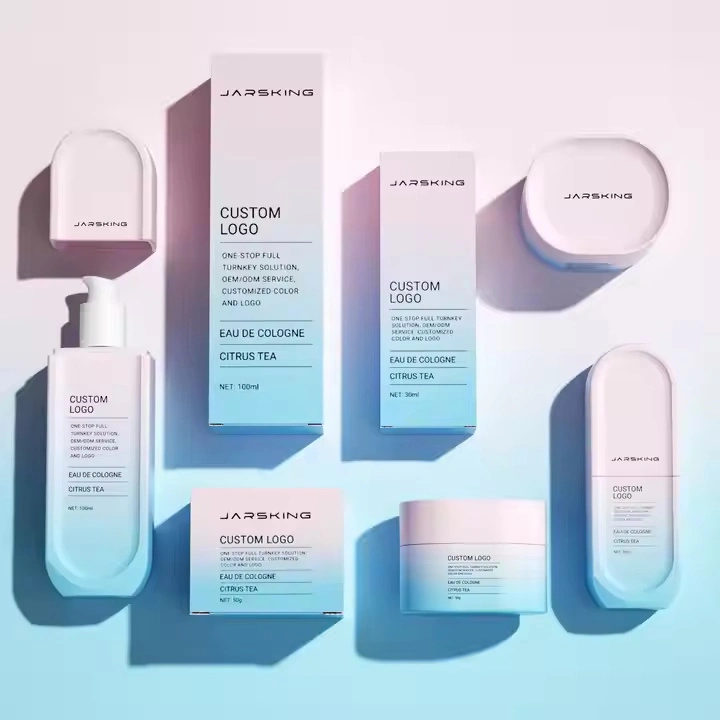
Types and Materials
- Folding Cartons: Lightweight, customizable, and a favorite for makeup and skincare packaging. They’re cost-effective, easy to print on, and perfect for branding and information.
- Rigid Boxes: Used for luxury skincare or beauty gift sets, rigid boxes offer a premium feel and superior protection—ideal for high-end products.
- Sleeves & Wraps: Add branding and visual appeal without excess material, supporting minimalist and eco-friendly packaging trends.
- Blister Packs: Combine plastic and cardboard to hold mini products or samples, often used for travel sizes or promotional sets.
Eco-Friendly Trends in Secondary Packaging
- Recycled Paperboard: High-quality, printable, and increasingly popular as brands seek sustainable packaging solutions.
- Soy-Based Inks: Reduce environmental impact and deliver vibrant, eco-friendly print quality.
- Minimal Packaging: Less is more—using only what’s necessary to protect and present the product, reducing waste and supporting brand sustainability goals.
Design That Connects
- Visual Impact: Bold colors, metallic accents, and unique shapes help your products attract attention in a crowded retail environment. Eye-catching patterns and well-chosen typography can make your packaging memorable and instantly recognizable.
- Unboxing Experience: Clever openings, hidden messages, and tactile finishes (like embossing or soft-touch coatings) delight customers and encourage social sharing, turning your packaging into part of the beauty ritual.
- Digital Integration: QR codes and other smart packaging features link customers to tutorials, ingredient details, or your brand’s story—no extra paper needed, and a seamless blend of physical and digital experiences.
Regulatory and Labeling Requirements
- Marketing Claims: Phrases like “natural makeup,” “paraben-free,” or “vegan skincare” must be accurate and substantiated to comply with regulations and build consumer trust.
- Certifications: Logos for cruelty-free, organic, or other certifications reassure customers and add credibility.
- Instructions and Warnings: Clear, concise, and easy-to-find information is essential for safe and effective product use.
- Distributor Information: Secondary packaging often includes the address of the distributor and additional product details as required by regulations.
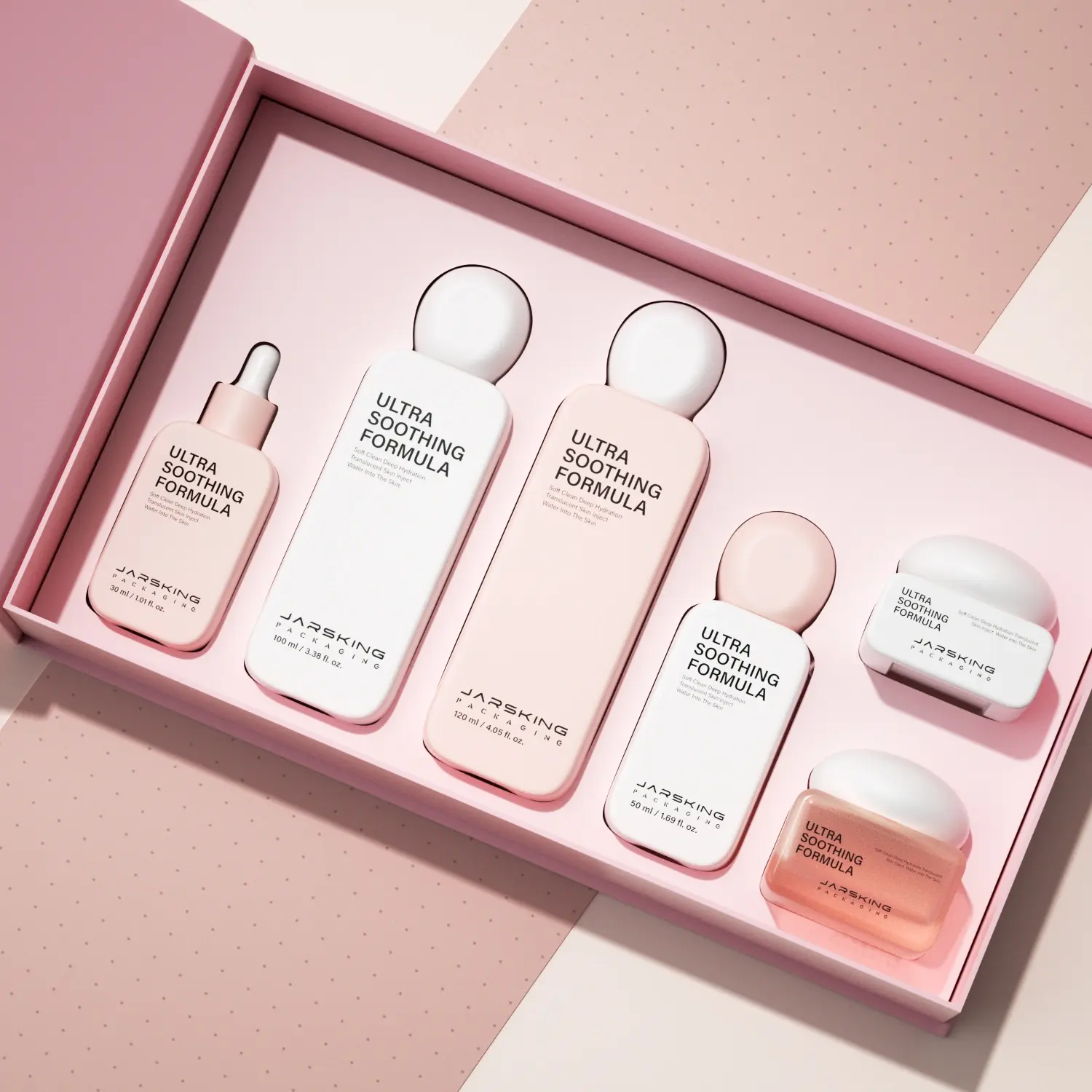
Tertiary Packaging: The Logistics Hero
What Is Tertiary Packaging?
Tertiary packaging is the unsung hero in the world of cosmetic packaging. While primary and secondary packaging steal the spotlight with their beauty and branding, tertiary packaging works tirelessly behind the scenes. It includes the sturdy shipping boxes, pallets, shrink wraps, and cushioning materials that protect your beauty products as they travel from the manufacturing facility to warehouses, retailers, and ultimately to your customer’s doorstep. Without this layer, even the most beautiful skincare packaging or makeup packaging would never arrive safely.
Why Tertiary Packaging Is Crucial
- Protection: Tertiary packaging is your brand’s first line of defense during bulk shipping and storage. It shields products from bumps, drops, and environmental factors, reducing the risk of damage or loss.
- Efficiency: Designed for practicality, tertiary packaging makes stacking, storing, and transporting large quantities of beauty products easy and cost-effective. Standardized sizes and shapes help maximize space in trucks and warehouses.
- Tracking: With barcodes, QR codes, and clear labeling, tertiary packaging streamlines inventory management and logistics. It ensures that products are traceable throughout the supply chain, making stock control and recalls much more manageable.
- Sustainability: As sustainability becomes a key focus in the beauty industry, more brands are opting for recyclable, reusable, and biodegradable shipping materials. Green logistics is not just a trend—it’s a necessity for eco-friendly packaging strategies.
Types & Materials in Tertiary Packaging
- Corrugated Shipping Cartons: These are the backbone of bulk shipping. Corrugated cardboard boxes are durable, lightweight, and fully recyclable, making them a staple for shipping everything from skincare sets to makeup palettes.
- Pallets: Wooden or plastic pallets make it easy to stack and move large quantities of products. They’re essential for efficient loading and unloading in warehouses and during transport.
- Shrink Wraps & Straps: Plastic shrink wraps and sturdy straps keep shipments secure on pallets, preventing boxes from shifting or toppling during transit.
- Cushioning: Foam inserts, air pillows, or recycled paper fill empty spaces and provide extra protection, especially for fragile glass bottles or luxury compacts.
Green Logistics: Sustainable Tertiary Packaging Trends
- Reusable Crates: More brands are switching to reusable crates and containers, reducing single-use waste in their supply chains.
- Lightweighting: By minimizing the weight and volume of shipping materials, brands can cut shipping costs and lower their carbon footprint.
- Biodegradable Wraps: Innovative brands are replacing traditional plastic wraps with biodegradable alternatives, further supporting eco-friendly packaging goals.
Regulatory and Logistics Considerations
- Standardized Sizes: Using industry-standard box and pallet sizes ensures compatibility with shipping and storage systems, improving efficiency and reducing costs.
- Clear Labeling: Tertiary packaging must be clearly labeled with handling instructions like “Fragile,”“This Side Up,”and barcodes for tracking. This helps prevent mishandling and ensures smooth logistics.
- Compliance: All tertiary packaging must comply with international transport and safety regulations, including requirements for hazardous materials, weight limits, and recyclability.
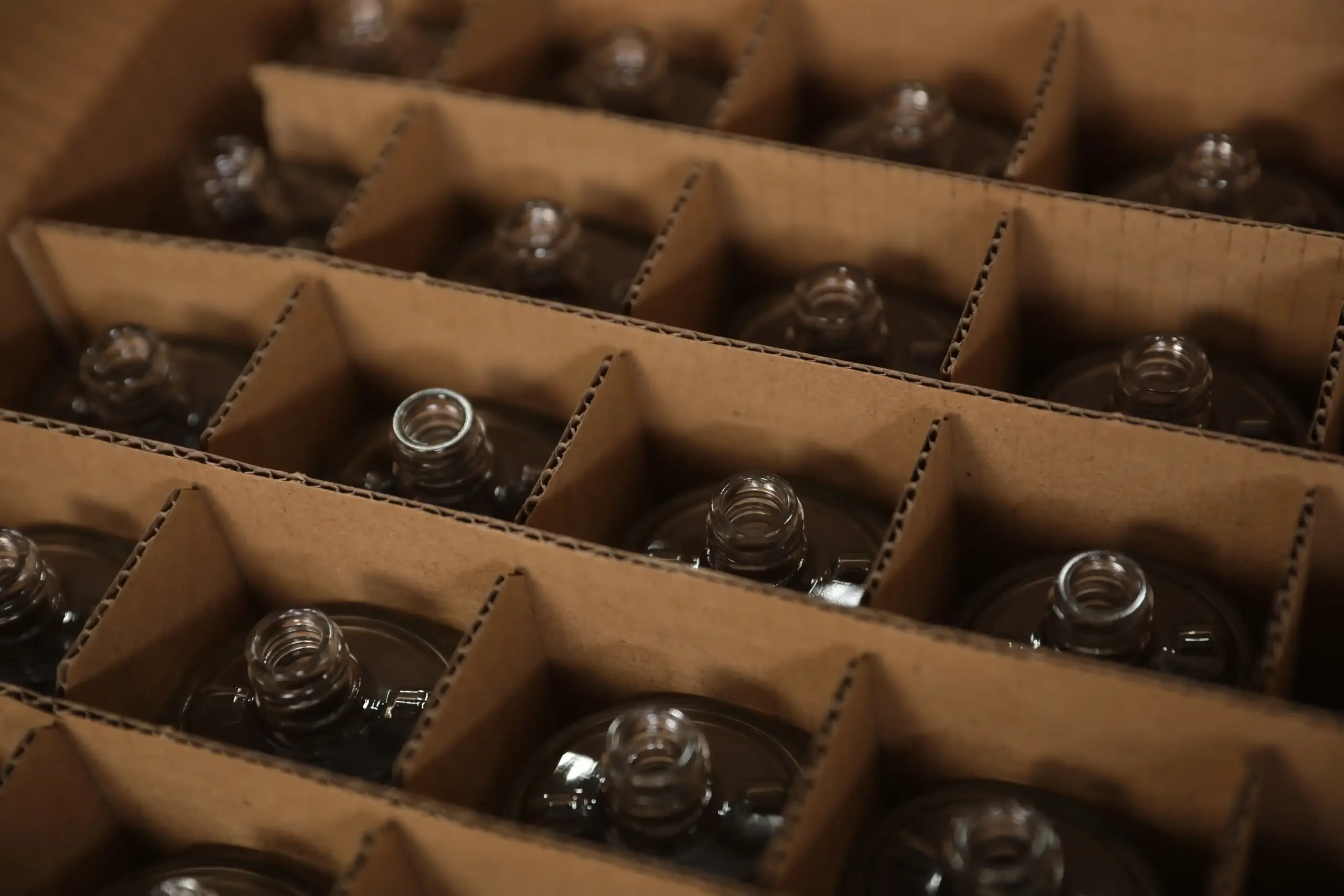
Sustainability in Cosmetic Packaging: The New Standard
The Eco-Friendly Revolution
Today’s beauty consumers are more conscious than ever about the environmental impact of their purchases. Sustainable packaging has become a key factor influencing buying decisions, with shoppers actively seeking brands that prioritize eco-friendly packaging solutions. From refillable jars to compostable boxes, brands embracing sustainability are not only winning customer loyalty but also enhancing their visibility in search engines through strong alignment with green values.
Sustainability in cosmetic packaging is no longer a niche trend—it’s rapidly becoming the industry standard, reshaping how beauty products are designed, manufactured, and delivered.
Industry Commitments to Sustainability
Several major beauty companies have set ambitious goals to lead the shift toward sustainable packaging:
- L’Oréal, Unilever, and Estée Lauder have committed to using 100% recyclable or compostable packaging by 2030. This commitment reflects a broader industry push toward reducing plastic waste and improving circularity.
- Refillable Systems are becoming mainstream, with products like lipsticks, foundations, and skincare jars designed with refill cartridges to minimize single-use packaging waste.
- The adoption of the circular economy model is now widespread, with packaging designed for reuse, easy disassembly, and recyclability. This approach extends the lifecycle of materials and reduces environmental impact.
These commitments demonstrate how sustainability is integrated into corporate strategies, driving innovation and transparency in packaging design.
Challenges in Sustainable Cosmetic Packaging
While the benefits of sustainable packaging are clear, several challenges remain:
- Cost: Eco-friendly materials and innovative refill systems often come with higher production costs. However, consumers show a willingness to pay a premium for green beauty products, making investment in sustainability a worthwhile endeavor.
- Education: Brands face the ongoing task of educating customers on how to properly recycle or refill packaging. Clear communication and user-friendly designs are essential to maximize the environmental benefits.
- Compliance: Navigating the complex and evolving landscape of global regulations on packaging waste, recycling, and eco-labeling requires vigilance and adaptability from brands.
Addressing these challenges is crucial for brands to maintain credibility and meet both consumer expectations and regulatory requirements.
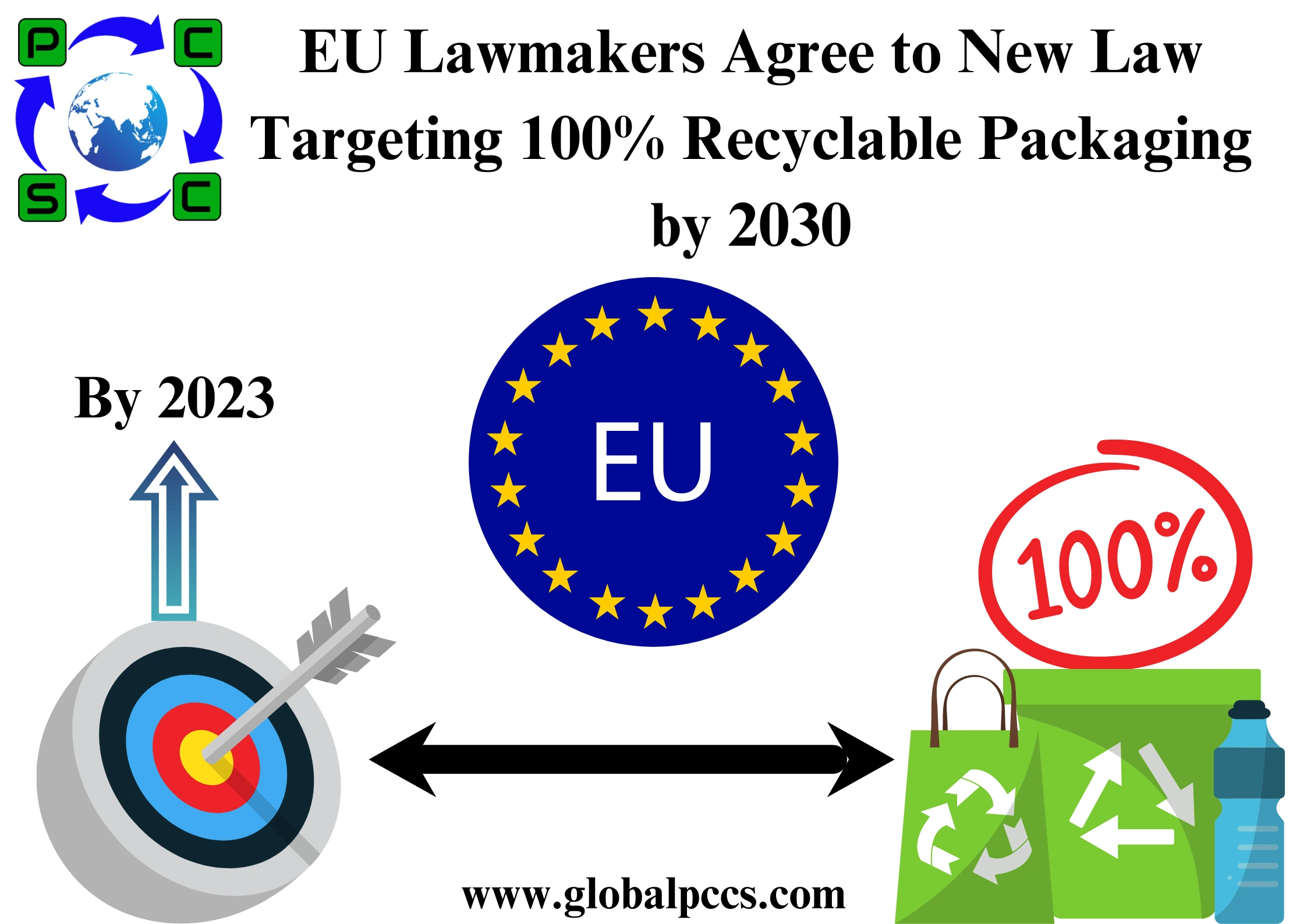
Key Sustainability Strategies in Cosmetic Packaging
To meet sustainability goals and consumer demands, beauty brands are adopting several effective strategies:
Eco-Friendly Materials
- Glass: Highly recyclable and inert, glass remains a preferred choice for luxury and sustainable packaging.
- Bamboo: A renewable, biodegradable material that adds a natural aesthetic and reduces reliance on plastics.
- Aluminum: Lightweight and endlessly recyclable, aluminum is gaining popularity for tubes, jars, and caps.
- Biodegradable Bioplastics: Derived from renewable sources, these materials break down more easily in the environment compared to conventional plastics.
Minimalist Design
- Streamlining packaging to use fewer materials reduces waste and simplifies recycling.
- Minimalist aesthetics also appeal to eco-conscious consumers who associate simplicity with sustainability.
Mono-Material Solutions
- Using a single type of material throughout the packaging (e.g., all glass or all aluminum) makes recycling more efficient by reducing contamination.
- Mono-material designs are easier to disassemble and recycle, supporting circular economy principles.
Waterless and Solid Formats
- Products like shampoo bars, powder cleansers, and concentrated skincare reduce or eliminate the need for liquid formulations, significantly cutting down on packaging volume and weight.
- These formats also reduce carbon footprint related to transportation and storage.
Regulatory Compliance and Global Standards
Packaging Laws and Standards
Cosmetic packaging is held to rigorous standards worldwide to ensure consumer safety, product integrity, and environmental responsibility. As regulations evolve, brands must stay vigilant to remain compliant and competitive.
Key Requirements
- Ingredient Listing:
Every cosmetic product must display a transparent, complete ingredient list. This ensures consumers are fully informed about what they are applying to their skin, helps prevent allergic reactions, and supports regulatory transparency. Ingredients are typically listed in descending order of concentration using INCI (International Nomenclature of Cosmetic Ingredients) names. - Batch Numbers & Traceability:
Batch numbers are required for all cosmetic packaging. These codes are vital for traceability, allowing brands to quickly identify and recall specific batches in the event of a safety issue or quality concern. This is essential for effective quality control and regulatory compliance. - Eco-Labels:
Packaging must include clear recycling instructions and accurate sustainability claims. Eco-labels guide consumers on how to dispose of or recycle packaging responsibly and prevent greenwashing by ensuring all environmental claims are substantiated and verifiable.
Regional Standards:
- European Union: The EU Green Deal and Cosmetic Regulation (EC) No 1223/2009 set strict rules on labeling, safety, and environmental impact. The Green Deal, in particular, is pushing for increased use of recycled content and reduced packaging waste.
- United States: The FDA regulates cosmetics under the Federal Food, Drug, and Cosmetic Act. Packaging must not be misleading and must include all required safety and ingredient information.
- Asia-Pacific: Countries like Japan, China, and South Korea have their own standards, often harmonized with global norms but sometimes requiring additional local labeling or safety documentation.
Evolving Regulations
The landscape of cosmetic packaging regulation is rapidly changing, driven by sustainability goals and consumer demand for transparency.
- Packaging Waste:
Many regions are introducing stricter limits on single-use plastics and mandating minimum levels of recycled content in packaging. The EU, for example, is phasing in requirements for higher recycled content in plastic packaging and setting ambitious targets for packaging waste reduction. - Eco-Labeling:
New rules increasingly require that recycling instructions, disposal guidance, and environmental claims be clear, accurate, and easy for consumers to understand. Labels like “recyclable,”“biodegradable,”or “compostable” must be substantiated by evidence and comply with local and international standards.
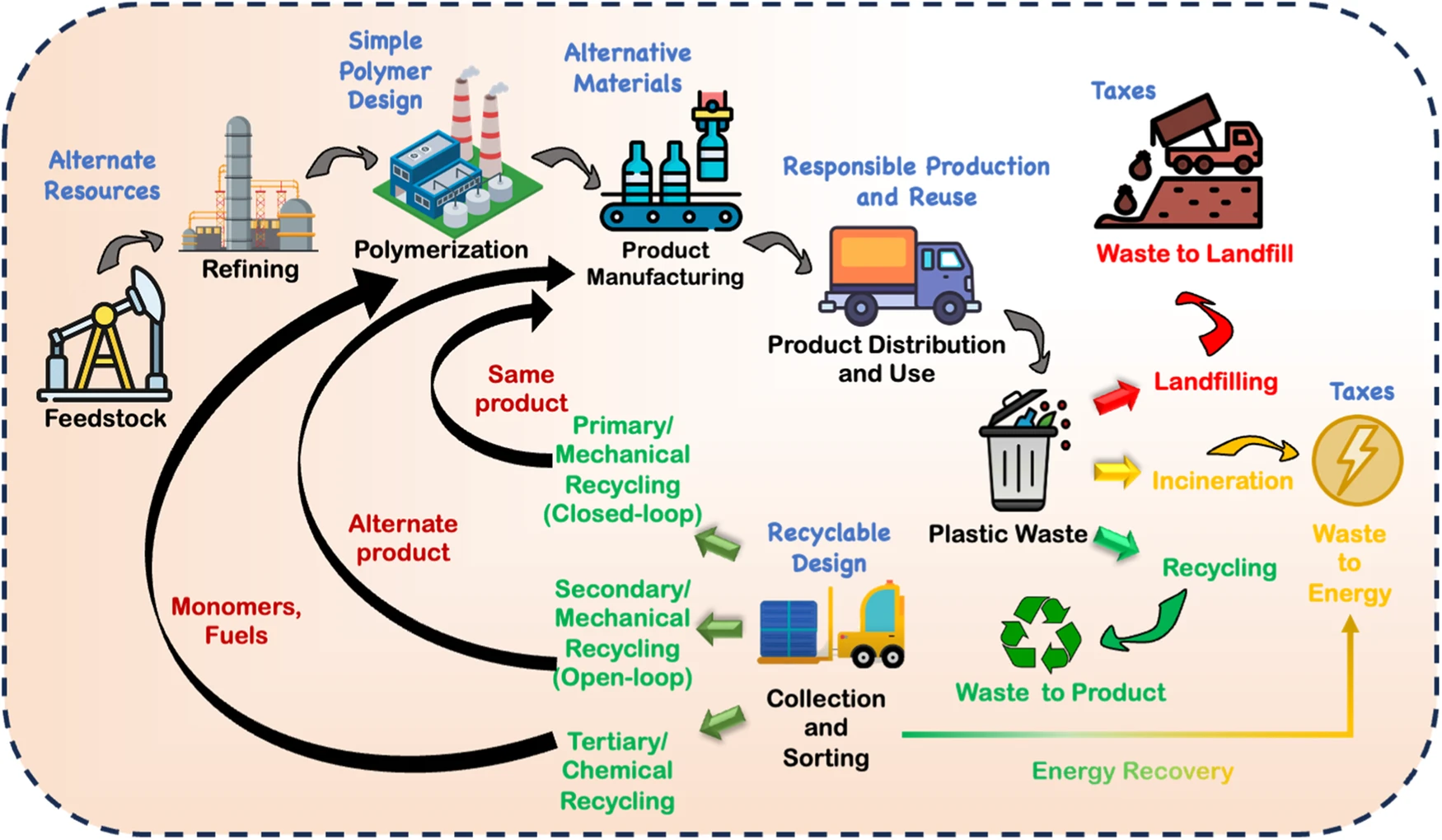
Schematic showing the plastic life cycle (black), different plastic waste handling methods (landfilling, incineration, and recycling), approaches to recycling (green), and solutions to achieve sustainability (blue).
Consumer Behavior: Packaging as a Purchase Driver
The Power of First Impressions
Did you know that over half of beauty shoppers will pay more for products with sustainable packaging? The right packaging can turn a first-time buyer into a loyal fan.
What Shoppers Want in Beauty Packaging
Beauty consumers today are discerning, design-savvy, and sustainability-focused. Here’s what drives their purchasing decisions:
•Transparency:
Shoppers trust brands that provide clear, honest labeling and allow them to see the product inside. Transparent packaging, ingredient lists, and straightforward claims help consumers feel confident about what they’re buying.
•Aesthetics:
Minimalist, visually striking designs are highly desirable. Packaging that looks clean, modern, and “Instagrammable” is more likely to be photographed, shared, and remembered. Beauty lovers are drawn to packaging that feels as beautiful as the product itself.
•Functionality:
Practical features make a big difference. Easy-to-use pumps, droppers, airless dispensers, and ergonomic compacts enhance the daily routine and reduce product waste. Packaging that’s convenient and intuitive to use leaves a lasting positive impression.
•Sensory Experience:
The tactile and sensory qualities of packaging matter. The feel of a soft-touch tube, the satisfying click of a magnetic closure, or the cool weight of a glass bottle can all elevate the user experience. Color, texture, and even sound play a role in making a product memorable and enjoyable to use.
Social Media and the Unboxing Experience
Beauty packaging doesn’t just influence buying decisions at the store—it’s a key part of the digital conversation.
•Instagrammable Packaging:
Photogenic, unique packaging designs are made for social media. When customers share their unboxing experiences online, they amplify your brand’s reach and credibility. A visually appealing package can spark word-of-mouth buzz and organic marketing, especially among younger, digitally native shoppers.
•Influencer Partnerships:
Collaborations with artists and influencers for limited-edition packaging create excitement and exclusivity. These partnerships can drive anticipation, encourage pre-orders, and generate viral moments. Influencers often showcase the unboxing process, highlighting both the product and the packaging, which can significantly boost brand awareness and desirability.
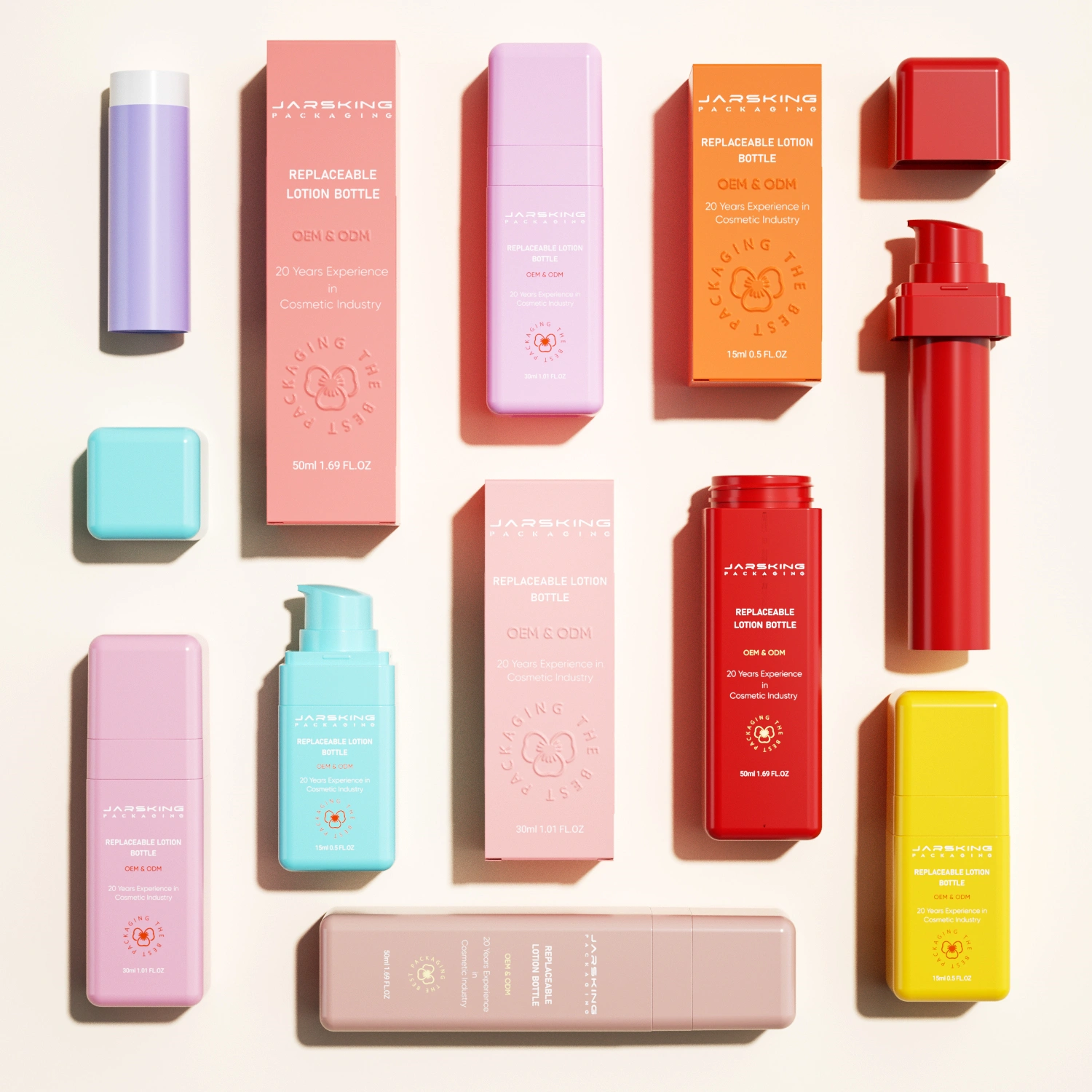
Actionable Strategies for Beauty Brands
Audit Your Packaging
Conduct a thorough review of your entire packaging lifecycle. Identify where you can minimize material use, introduce recyclable or biodegradable alternatives, and implement reusable components. Focus on eliminating unnecessary layers, switching to mono-materials, and incorporating post-consumer recycled (PCR) content.
Invest in Innovation
Embrace forward-thinking solutions like smart packaging (e.g., QR codes for ingredient traceability), refillable containers, and compact, minimalist designs that reduce environmental footprint. Innovative formats not only appeal to eco-conscious consumers but also help you stand out in a crowded market.
Engage Your Audience
Your packaging is more than just a container—it’s a storytelling tool. Use it to communicate your brand’s sustainability journey, values, and purpose. Include messaging on how to recycle or reuse the product, and consider using augmented reality (AR) or scannable elements to deliver an interactive experience.
Stay Ahead of Regulations
Keep a close watch on evolving packaging and sustainability regulations worldwide—especially in markets like the EU, U.S., and Japan. Proactively adapting to these standards can prevent costly recalls or redesigns and signal to consumers that your brand is forward-thinking and compliant.
Collaborate for Impact
Partner with packaging designers, eco-conscious influencers, and sustainability consultants to co-create unique, planet-friendly packaging. Cross-industry collaboration can lead to smarter solutions, greater consumer trust, and an expanded reach in green beauty circles.
Conclusion
Cosmetic packaging isn’t just about layers—it’s about the journey. From the primary bottle or jar that touches the skin, to the secondary box that catches the eye, and the tertiary carton that ensures it all arrives safely—every level plays a role in shaping your customer’s experience.
When you blend beauty with purpose—protection with creativity, branding with sustainability—you create packaging that does more than look good. You create something that tells your story, earns trust, and makes your customers feel good about their choices.
And in a world where consumers care deeply about what they buy and why they buy it, that matters more than ever. The search terms may be “cosmetic packaging,” “skincare packaging,” or “eco-friendly packaging”—but what people are really looking for is a brand that feels right. The most successful beauty brands will be those who see packaging not just as a container, but as a conversation. A way to say: we care, we listen, and we’re here to make a difference.
